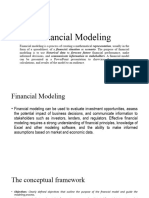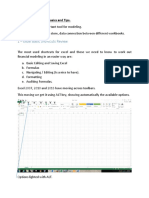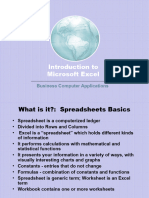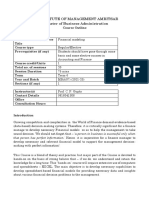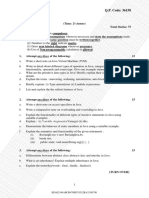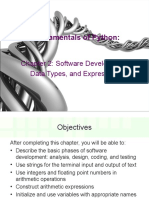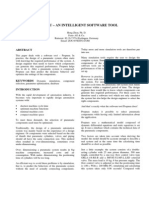0% found this document useful (0 votes)
12 views34 pagesFinance Modeling Guide
The document outlines the importance and applications of financial modeling in corporate finance, investments, and derivatives, highlighting its utility for various financial professionals. It details the financial modeling process, which includes problem conception, model construction, flexibility testing, and output summarization, along with five essential rules for effective spreadsheet design. Additionally, it discusses the use of Excel functions relevant to financial modeling, including financial, mathematical, conditional, text, and statistical functions.
Uploaded by
chanaka ashanCopyright
© © All Rights Reserved
We take content rights seriously. If you suspect this is your content, claim it here.
Available Formats
Download as PDF, TXT or read online on Scribd
0% found this document useful (0 votes)
12 views34 pagesFinance Modeling Guide
The document outlines the importance and applications of financial modeling in corporate finance, investments, and derivatives, highlighting its utility for various financial professionals. It details the financial modeling process, which includes problem conception, model construction, flexibility testing, and output summarization, along with five essential rules for effective spreadsheet design. Additionally, it discusses the use of Excel functions relevant to financial modeling, including financial, mathematical, conditional, text, and statistical functions.
Uploaded by
chanaka ashanCopyright
© © All Rights Reserved
We take content rights seriously. If you suspect this is your content, claim it here.
Available Formats
Download as PDF, TXT or read online on Scribd
/ 34





















